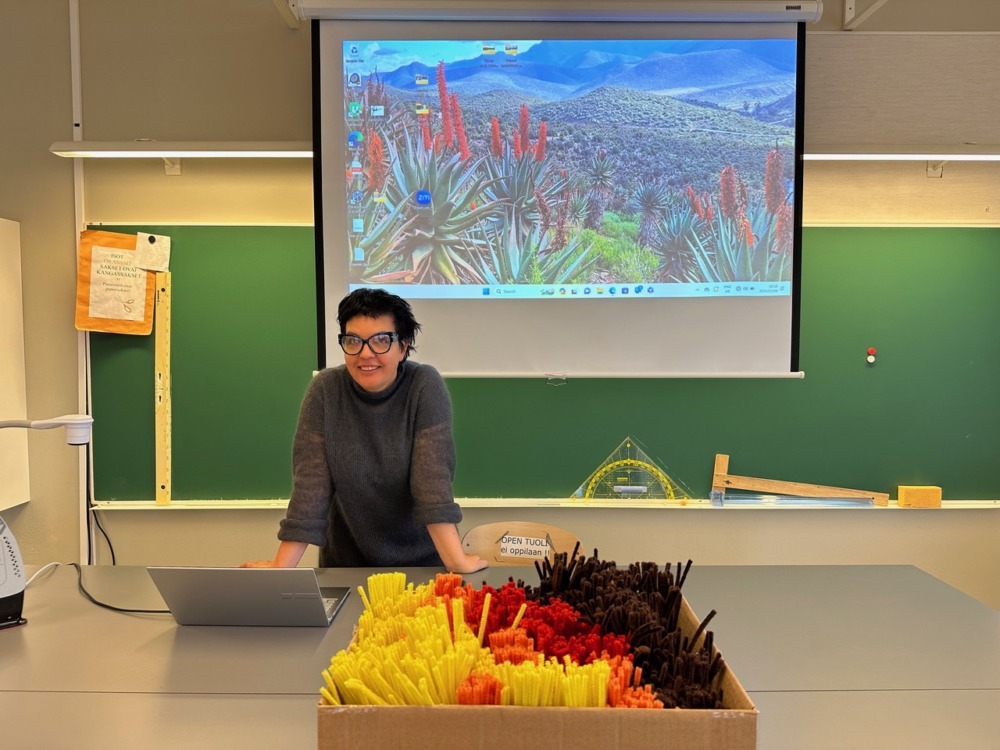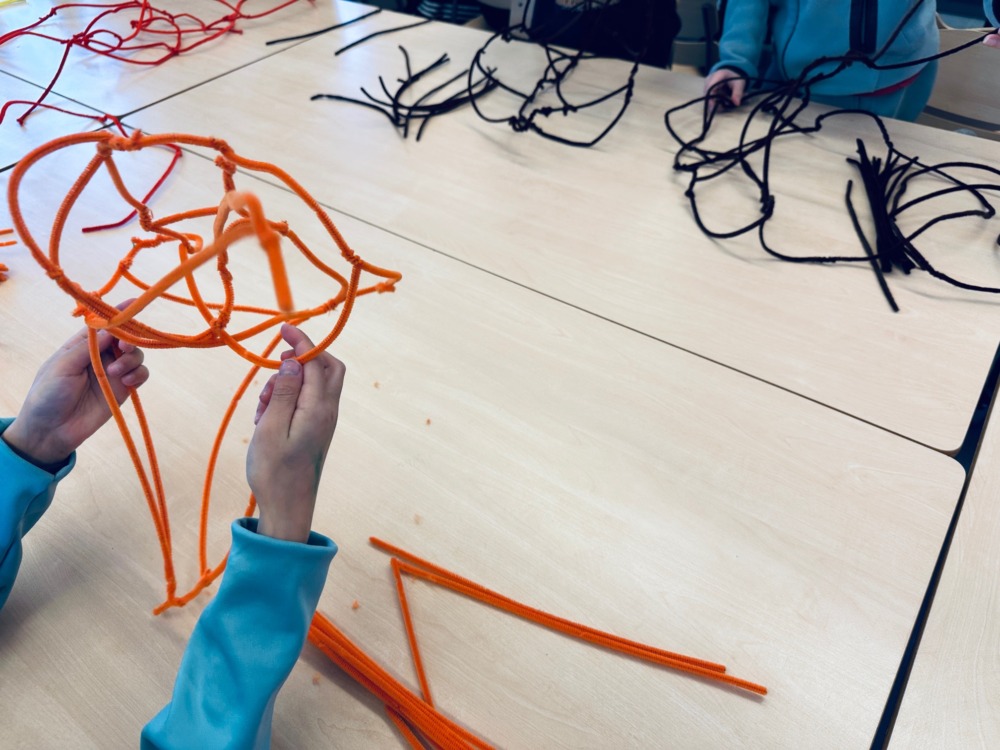Chilren’s Culture Weeks ”World builders”-workshops at Freinet school and at Kari-, Kodisjoki-, Nanu-, Pohjoiskehä and Pyynpää schools on 4.-17.3.2024.
Wall painting workshops with the youth art group of the Rauma parish 12.3.-12.5.
An Aloe Swallowed my Drone in the Verstas space of Rauma Art Museum 6.4.-12.5.2024. The exhibition is open Tue-Fri at 12-17 and Sat-Sun at 11-16 (6.-7.4., 13.-14.4., 11.-12.5.). Closed on 1.5. and 9.5.2024. Free entry. On Rauma Day 17.4.2024 the artist will be there to present the work at 12-16.
Residency: March-May
Liza Grobler (b. 1974 ZA)
Liza Grobler (South Africa) is the artist in residence at RaumArs from February to May 2024. Together with the children in Rauma she created an exhibition in the Verstas space of Rauma Art Museum. In addition she works with the youth art group of the Rauma parish.
During Rauma Children’s Culture Weeks on March, in a total of 24 workshops in schools, she collaborated with future ‘world builders’, that is children, to construct a suspended garden using the colours of the magical Aloe Ferox plant as inspiration.
This work will form the core of the exhibition and will be offset by small oil paintings, an interactive video projection and a scent that captures late afternoons in the Karoo. The installation brings together two spaces, Rauma and the Karoo, from opposite sides of the globe through interactive processes that engage the senses of the viewer.
The title of the exhibition “Aloe nielaisi droonini – An Aloe Swallowed my Drone” refers to the dialogue between human, natural environment and machines.
In the part of South Africa where she lives, the landscape is vast and dry. It is a semi-desert. The area is called the Karoo and the name of this region was given by some of the first people to walk this earth. These people told many stories about the beauty and magic of nature. They understood the relationship between humans and landscape. GoogleEarth can find your location and track your journey in real time. Maps indicate possible routes, roads and borders. Technologies enable us to capture and simulate physical spaces, but we carry our memories (our inner landscapes) not on our screens, but in our bodies.
Liza Grobler tells: In the Karoo, in winter, the aloes start to bloom. There are many varieties and quite a few have medicinal properties, but even more have thorns. The Aloe ferox can reach a height of up to 3m and the flowers look like dark orange rockets or spears, reaching to the heavens. Aloe silhouettes populate the mountains like a regiment. I tried to capture this landscape by flying my drone in a remote region with no GPS signal. Due to my limited flight simulation skills, the drone was speared by a sharp leaf high up in the mountains. I spent over an hour searching and only found it once I had identified the mechanical emergency beep amongst all the birdsong. The drone was scratched and shaky, but otherwise unscathed. I thought to myself that this is a cautionary tale about our aspirations, our relationship with technology and the natural environment. The landscape bites back.”
Liza Grobler has visited Rauma before. In 2002, she created two environmental art works One with Rauma Lyseum 7th grade students to the bus stop and the other to the trees surrounding old Holy Trinity Church ruins. In addition Grobler led a mask workshop in Rauma Freinet School. In 2007 Grobler was invited to the Lönnström Art Museum’s exhibition Yhteyksiä – Common ground, which gathered artists together from the past 10 years of RaumArs’ activity. At that time, together with Jeanne Hoffman, Grobler created a city game “African star”, which citizens were able to enjoy. The icing on the cake was the World Championship Competition in Afrikan tähti (a Finnish board game) held at the Rauma city theatre.


